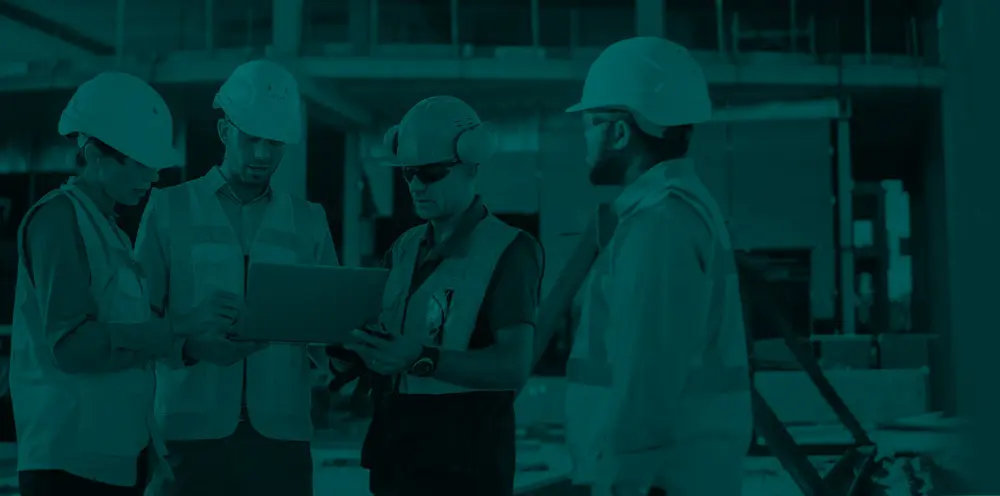Understanding the Dangers of HAVS: What Every Worker Should Know
Hand-Arm Vibration Syndrome (HAVS) is a serious occupational health condition that affects thousands of workers across the UK each year. Often developing gradually over time, HAVS is permanent, painful, and entirely preventable.
Whether you're operating vibrating tools daily or managing a site, it's critical to understand the dangers of hand-arm vibration, how HAVS develops, and the steps you can take to protect yourself and your team.

What Is HAVS?
Hand-Arm Vibration Syndrome (HAVS) is a progressive condition caused by prolonged or repeated use of vibrating hand-held tools, machinery, or equipment. It affects the nerves, blood vessels, and joints in the hands and arms, leading to symptoms that can make even simple tasks difficult or impossible.
Once HAVS takes hold, the damage is often irreversible. The condition is permanent, having a devastating impact on a worker’s quality of life. It can also make future employment near impossible.
Is HAVS Permanent?
HAVS is a permanent disability. The damage to nerves and circulation is often not detected until it’s advanced and by then, there is no cure. While treatments can help manage the symptoms, prevention is the only reliable defence.
Early action is key. Recognising the signs and reducing exposure before long-term damage occurs is the only way to stay safe.
However, there is hope for the future of HAVS treatment. A recent study explored how vibration exposure damages vascular endothelial cells - the key players in blood vessel function. The researchers found that a specific long non-coding RNA (lncRNA) called MEG3 plays a protective role. When MEG3 expression was knocked down, cell damage, inflammation, and apoptosis worsened. In contrast, when MEG3 was present, it helped regulate key inflammatory and vascular factors, potentially mitigating vibration-induced harm.
What does this mean for HAVS sufferers? While HAVS remains a permanent condition today, this study suggests that targeting molecular pathways like MEG3 could be a game-changer in the future. As research progresses, we might one day see therapies aimed at repairing vascular damage caused by long-term vibration exposure.
As a company that is deeply invested in vibration-related workplace safety, we're always keeping up with the latest advancements. This study reinforces the importance of early prevention - but it also offers hope that science may one day provide a cure.
Read the full study here: https://lnkd.in/geg44GeW
What Are the Symptoms of HAVS?
Symptoms of HAVS vary by severity and stage but typically include:
Tingling and numbness in the fingers
Loss of grip strength
Fingers turning white (especially in cold conditions)
Pain or aching in the hands and arms
Reduced fine motor skills (e.g., difficulty doing up buttons)
In advanced cases, these symptoms can become constant, severely limiting mobility and independence.
Common Causes of HAVS in the Workplace
Vibration injuries at work are most commonly linked to:
Power tools such as grinders, drills, and impact wrenches
Construction equipment like jackhammers, compactors, and concrete saws
Manufacturing tools, including riveters, polishers, and cutting machines
Road and rail tools, including tampers, rail saws, and breakers
Landscaping equipment: chainsaws, lawnmowers and strimmers
Any tool that vibrates can contribute to HAVS if used for long enough without proper controls in place.
Even a few hours of exposure a day, over weeks or months, can lead to lasting damage, especially if the equipment is poorly maintained or workers aren’t rotated between tasks.
What Are the Health Risks of HAVS?
The health risks of HAVS go far beyond the hands:
It can force workers to change careers or stop working altogether
It increases the risk of mental health strain due to long-term pain or job loss
It makes simple, everyday tasks like holding utensils or turning keys painful or impossible
For employers, the consequences of failing to protect staff are severe, ranging from prosecution and fines to long-term HAVS injury compensation claims.
HAVS Injury Compensation: What Workers Need to Know
If you’ve developed HAVS because your employer failed to assess or control your vibration exposure, you may be eligible for HAVS injury compensation. Claims often involve:
Medical assessments to determine severity
Workplace investigations to establish negligence
Legal processes that can take months or years
But the truth is: no compensation can undo the damage once HAVS takes hold. That’s why the focus must always be on prevention, not payouts.
The Safer Way Forward: Real-Time Protection with HAV-Sentry
If you're working with vibrating tools, or managing people who do, the most effective way to protect against HAVS is through real-time measurements.
HAV-Sentry is a smart, wearable solution that gives workers and safety teams live data on vibration exposure. It shows exactly:
How long each worker has been exposed
Which processes are pushing them past legal limits
When it’s time to rest, rotate, or remove someone from risk
By tracking exposure per tool, per person, per shift, HAV-Sentry makes workplace safety measurable and gives workers more control over their own protection.
It’s not just about compliance. It’s about keeping people safe, healthy, and in work for the long term.
HAVS doesn’t happen overnight. It creeps in slowly, silently damaging hands, nerves, and futures.
But it doesn’t have to.
With education, proper monitoring, and the right tools, HAVS is entirely preventable.
If you work with vibrating tools, know your risk. Know the signs. And know there’s a better way